What Is Smen Butter And What Does It Taste Like?
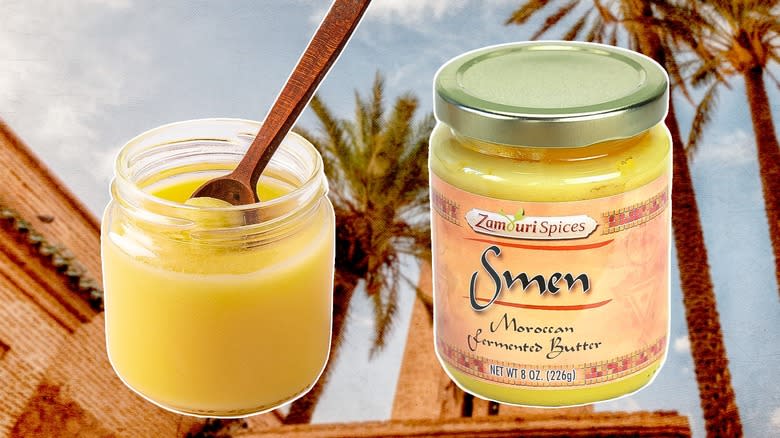
There are many types of butter with a vast array of different flavors, uses, and characteristics to suit your cooking needs. One type of butter that you likely haven't heard of, but that should most definitely be on your radar is smen. Smen is a unique fermented butter with a flavor profile unlike the standard blocks of butter you will find in your local chilled dairy aisle, more likely to remind you of a well-aged stinky cheese. Originating in the Maghreb region of North Africa, it is a fundamental ingredient in a plethora of Moroccan dishes, providing a characteristic cheesy and umami taste to tagines, grains, and bread, and local production is as prevalent today as it has been for generations.
Though this funky butter has remained a staple in Morrocan cuisine for centuries, it's a little harder to come by outside of the North African region, notwithstanding that the best-tasting smen is aged, sometimes for years, to achieve its prime flavor, but there are certainly ways to get your hands on smen and upgrade your stews, couscous, and even your coffee. With a little patience, it's also fairly simple and highly rewarding to make smen butter at home, and its intense aroma means a little goes a long way.
Read more: 12 Popular Grocery Store Butter Brands, Ranked
What Is Smen Butter?
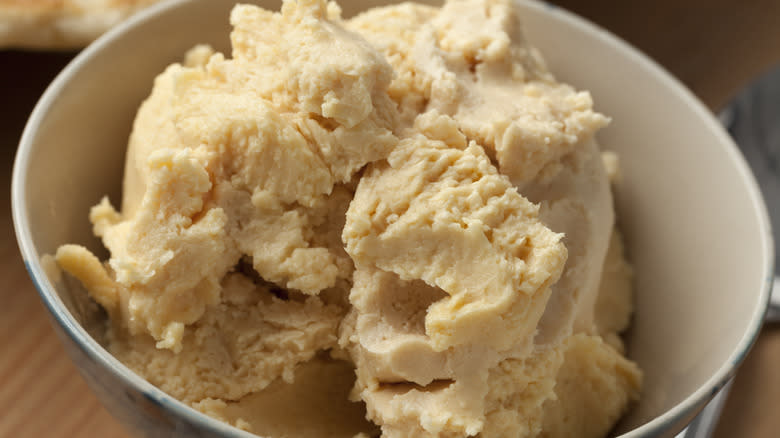
Smen is a salted, clarified butter made from sheep, goat, or cow milk, native to North African cuisine and considered a staple in Moroccan cooking. After it is clarified, the smen is fermented, giving it a distinctive cheesy, tangy taste that sets it apart from other butter and cements its use as both a cooking ingredient and an indulgent savory topping for bread and breakfast items. Similar to ghee, another popular clarified butter, smen was developed as a way to keep cooking fat around for extended periods in the days before refrigeration, but the preservation of this pungent butter has not only proved a means of convenience but also a catalyst for intense and delicious flavor.
Indeed, much like fine wine and stinky cheeses, smen gets better with age, lasting for many years when sealed and stored correctly. For those unfamiliar with the flavors of North African cuisine (or who have never considered the idea of intentionally aging their butter), smen may be a little overwhelming at first, with a characteristic rancid scent and a not-so-inconspicuous flavor. However, milder and more mellow variations, or those infused with a selection of herbs and other spices are also available and may provide a smooth transition into the wonderful world of one of Morocco's oldest dairy traditions.
Where Did Smen Originate?

Smen is native to North Africa, enjoying popularity in countries of the Maghreb such as Morroco, Tunisia, and Algeria. Though production methods and variations differ slightly between these countries, smen butter, in a general sense, is most commonly associated with Morocco on account of its presence, and esteem, in the majority of traditional Morrocan cuisine. For you are likely to find smen in almost all Moroccan dishes, used as a cooking fat for dishes like k'dras , but it is regarded as a staple ingredient in some recipes such as Harira, a traditional Moroccan soup of tomato and chickpeas.
It's not just in recent times that smen has been employed in Moroccan cooking, either. In fact, the making of smen has been a tradition in Morocco for centuries and is intertwined with various familial customs and traditions. According to NPR, there is a legend that Berber tribesmen would bury a clay jar of smen on the day of their daughter's birth and would unearth the jar to be used on her wedding day, which is not implausible given the high regard for smen that has been aged for a long time. Qaat Smen, translating to "Smen Square" is a testament to the country's celebration and history of this key ingredient: At this bustling market in Fez, vendors with families who have spent years mastering their technique, sell a vast array of smen, continuing the practice of generations.
How Is Smen Made?
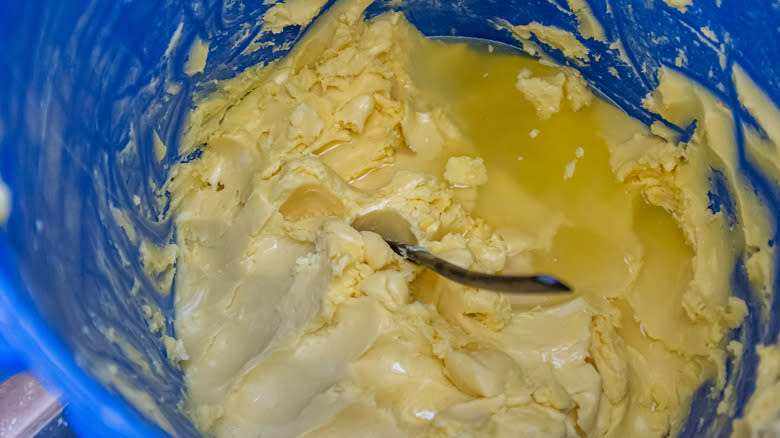
The intricacies of how smen is made can vary depending on the region and producer, but the general steps of clarifying butter, salting, and fermenting it are what characterize smen production, and these processes will usually follow a similar system. First, cow, sheep, or goat milk is churned into butter, sometimes in an animal hide. The butter is then clarified by heating, and any solids and impurities are strained out. The smen is then salted, to aid in its preservation, before any herbs, typically fenugreek, oregano, and thyme, though each maker of smen will have their own unique blend or adaptation, are added to the lard. Finally, the butter is jarred and sealed, ready to ferment.
Crucially, the smen butter must be left to age in a cool environment. Conventionally, the jars were stored underground, on account of the stability of the temperature conditions. It's the same rationale as the aging of cheese in caves: cool, consistent temperatures ensure a slow and even maturation. This process is fundamental, not just for the development of smen's rich, cheesy flavor, but also for preservation. As the smen sours, microbes flourish, and it's this that stops harmful bacteria from forming, keeping the smen safe to eat for years after it's been made, so it's pretty convenient that the older the smen, the richer the taste.
What Does Smen Taste Like?
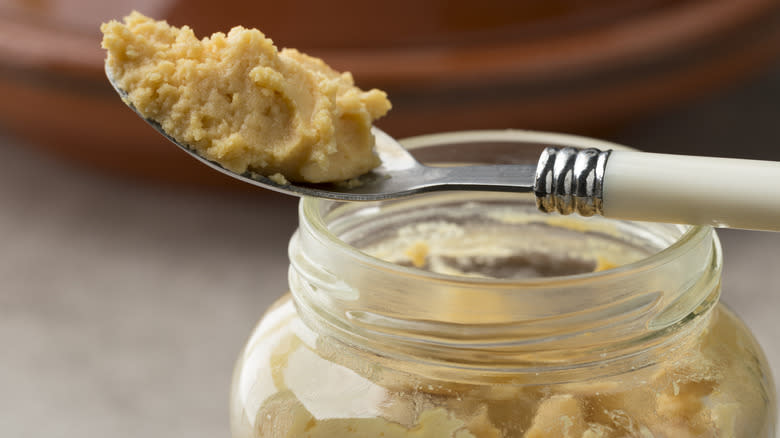
Smen has a very distinctive, salty, cheesy taste that is a product of its fermentation. It is most commonly compared to the flavor profile of blue cheese, on account of the lactic acid present in both, producing a mild tangy sourness, alongside the maturation process that equates smen with such stinky cheeses. This flavor becomes stronger with age, and, generally, the older the smen is, the more pungent it becomes. In fact, the degree of this pungency was traditionally used as a quantifier of wealth, for the stinkier the smen is, the more prized it is, which is a reflection of the wealth of those who produced or bought it.
However, the taste of smen will, much like its production methods, vary by area and ingredients. Goat butter, for example, is said to have a slightly nuttier and grassier taste than butter made from cow's milk, so you may notice a slight difference in taste depending on which animal's milk is used. The addition of various herbs and oils will, naturally, also impact the taste of the butter, but it is unlikely that smen's trademark taste will be too dulled by the addition of any complimentary spices.
How Is Smen Different From Other Clarified Butter?
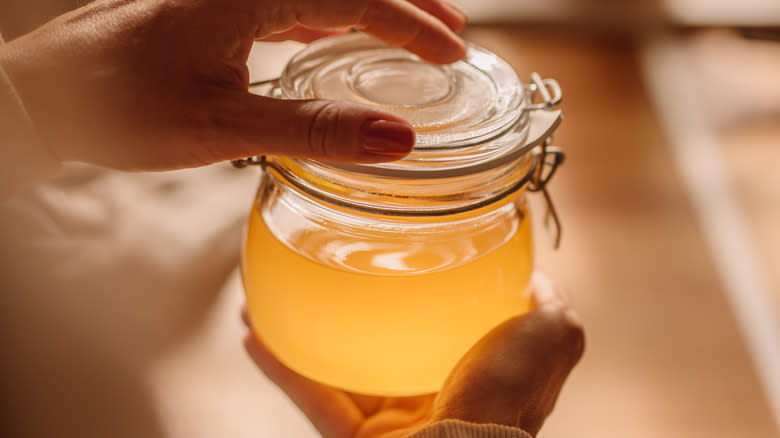
As a clarified butter, smen shares some properties with ghee, a clarified butter originating in India, and niter kibbeh, a flavorful clarified butter used in Ethiopian and Eritrean cuisine with a distinctive spicy aroma. All three boast high smoke points, making them ideal for cooking and sauteeing, and, by nature, can be enjoyed a lot longer than fresh butter, but smen is set apart by its fermentation process, which extends its uses beyond cooking and baking and makes it the ideal ingredient for not just elevating but imparting flavor.
Indeed, ghee has a slightly caramelized taste resulting from the butter being gently simmered and its milk solids browning, making it ideal for baking. Smen, however, is notoriously strong and salty and will be far less unassuming in recipes than ghee, and more cheesy than niter kibbeh. Additionally, smen's texture differs from ghee and other clarified butter, with a distinctively thicker, spreadable consistency that makes it ideal for topping bread and pastries. So, whilst it shares characteristics of other clarified butter and cooking fats, smen is arguably the more favorable choice if you're looking to introduce richness into your meals from the ground up.
How To Cook With Smen
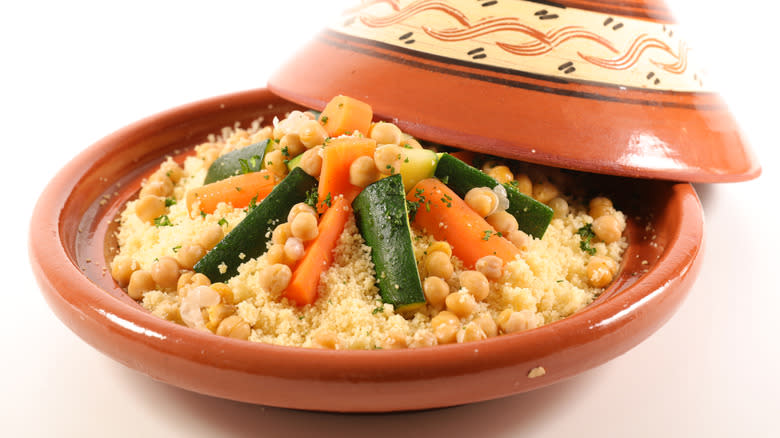
Smen butter has a high smoke point of around 486 F, which makes it ideal as a cooking fat, and it can be used to sear meat as well as roast vegetables. However, its strong flavor means that a lot can be overpowering, so you may want to use a tender hand. More commonly, smen is swirled into tagine and added to couscous recipes towards the end, whilst other fats are used to cook meat and vegetables in higher quantities. To incorporate smen into couscous dishes, stir it into the broth or water used to cook the couscous, and the grain will absorb the delicious cheesiness as it absorbs the water.
Smen isn't just useful for elevating your dinners, though, it's also a popular choice amongst Moroccans for boosting a cup of coffee. The keto-friendly 'bulletproof' coffee, which is essentially a creamy coffee made with a high level of fat, is a popular energy and metabolism booster around the world, but using smen in the place of other fats such as coconut oil or unsalted butter offers an entirely new experience. Smen imparts an umami saltiness that may help to counteract any bitterness or acidity present in your coffee, aided also by its high calcium content. Whilst it may sound controversial, this combination is sure to offer a new lease of life to your coffee break and keep you feeling satisfied far longer, too.
How To Use Smen To Elevate Your Side Dishes
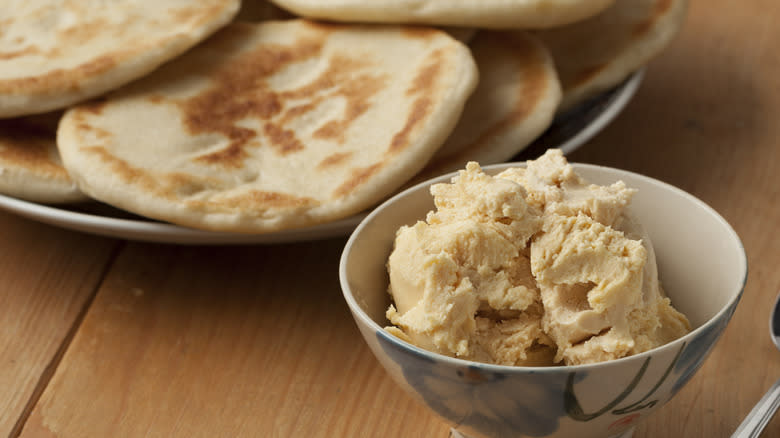
Though smen is great at imparting and elevating pre-existing flavours of stews, tagines and grain dishes, it's delicious and versatile enough in its own right to take centre stage. Smen's cheesiness means that it pairs beautifully with starchy, mild carbs such as potatoes and bread. Spreading smen directly onto fresh bread is commonplace in the Maghreb as a delicious savoury snack that packs a punch. Likewise, flatbreads smeared with a generous helping of the tangy butter are the perfect accompaniment to tomato-based sauces and juicy meats.
If, however, it's a warm and comforting side dish you're looking for, then smen and mashed potatoes go hand in hand. Indeed, held in high esteem for their smooth and creamy consistency and buttery taste, lend themselves as the perfect vehicle for smen's punchy flavour. To get a taste of this luxurious goodness, simply substitute smen in the place of ghee in this decadent mashed potato recipe, but remember that smen is more potent than ghee, so it's worth adjusting your quantities to taste.
Where To Buy Smen

Smen can be a little tricky to locate outside of its motherland, but it's worth taking a look at the world food section of your local supermarket, or checking if you have an African supermarket in your area. Alternatively, smen may be found in the ambient aisles, alongside coconut oil, ghee, and other cooking oils. Walmart stocks Zamouri Spices, a brand that specializes in Morrocan spices and ingredients, including smen. Whilst the butter is not available to buy through Walmart's website, you may find it in-store, although stock is likely to vary by location.
In some cases, you may find that what you're looking for has a slightly different name. Morrocan-style aged ghee, for instance, is not labeled as smen butter but is fermented and preserved in the same way, making it very similar to the smen butter you would find in Morrocco itself. Keep an eye out for butter or ghee that is classified as fermented, aged, or cultured, as this will likely give you a similar result. If you've scoured your local supermarkets to no avail, fear not. Smen is available to order online with ease.
Nutritional Information Of Smen

Naturally, as butter, smen is high in fat and contains no carbohydrates or protein. Per 100 grams, smen contains approximately 898 calories, 99.8 grams of fat, 68 grams of saturated fat, and negligible amounts of carbs, protein, and sugar. The amount of salt, and subsequently sodium, will vary depending on the make of the butter, so if this is something you are monitoring then it's best to enquire before you buy. Smen's high fat content does not, however, render it an unequivocally unhealthy food, and there's no need to let numbers put you off. Its high energy levels make it an ideal choice for Ramadan, or any period in which you require a lot of sustenance, but if this is not your goal, it's worth remembering that its potency ensures only a small serving is needed for a whole dish. On top of this, smen has many nutritional and gustatory benefits that make it a solid choice to incorporate into your diet.
For those who struggle with digesting dairy, smen may prove particularly useful, as smen is far more digestible than normal butter. This is thanks to the fact that smen has all impurities, including lactose, water, and casein (a butter protein) removed. Not only this, but smen is even kinder to your gut via the probiotics that are present during fermentation. Probiotics contribute to improved digestion, reduced inflammation, and weight loss, alongside an array of other benefits, so let this be your sign to embrace fermented foods.
Varieties Of Smen
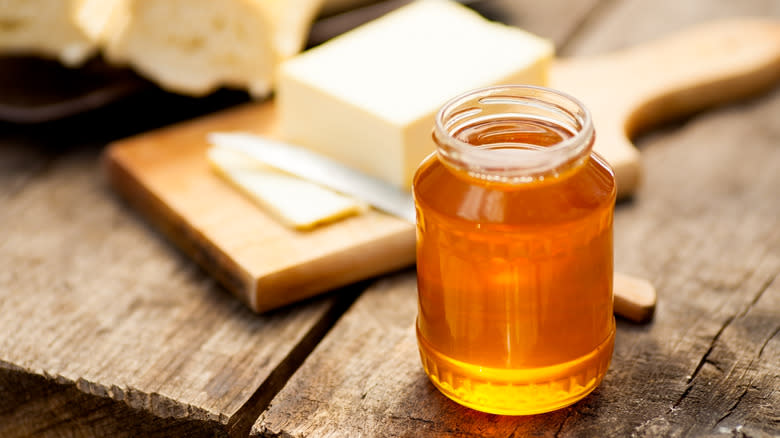
Whilst the key components of smen will typically remain the same, the taste will vary depending on when and where you buy smen, in addition to whichever extra ingredients are added to the fat. For instance, it's unlikely that the mass-produced smen that you may be able to find in stores will have the same pungency as that which has been aged for over eight years and purchased in Qaat Smen, though you will no doubt still get the hallmark smen taste. Whether the smen was made in winter or summer will also have an impact on its composition. Smen made during winter is thought to be more fragrant than those made in summer, as the warm weather, closer to the temperature where butter becomes liquid, matures the smen more slowly than cooler conditions, meaning that timing plays a significant role.
Other times, variations of smen are more explicit, such as in the inclusion of accompanying ingredients. From fruit to dried meat, smen makers have gotten creative with their additions. Honey, which lends a sweet unctuousness that greatly balances smen's intensely piquant taste, has become commonplace in the heart of smen production in Morroco. Another popular variety is that which is made with khlie, a type of preserved Moroccan meat made from beef or lamb and marinated with garlic and cumin. Preserved butter made with preserved meat may sound a little overkill, but the result is something deliciously exuberant and incredibly fragrant.
How To Make Smen Butter At Home
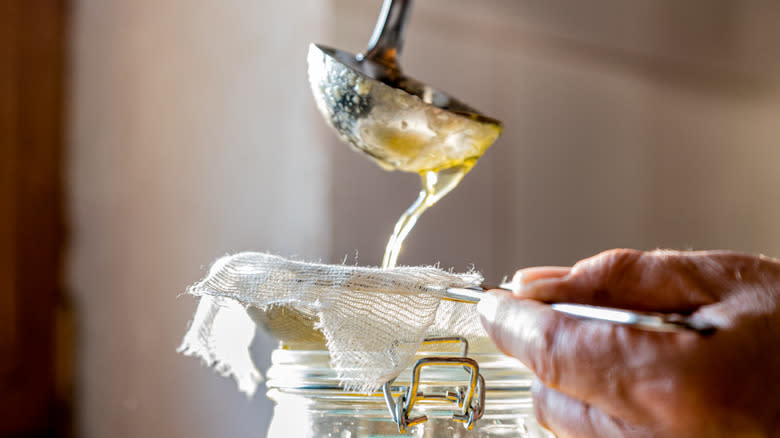
Since smen can be tricky to find at your grocery store, making it at home is a good alternative. Despite the many customs, long maturation processes, and unconventional storage solutions, making smen butter is not as complicated as you might think; the process of clarifying the butter should take no longer than around 50 minutes. All you need is butter, salt, a glass or ceramic jar, some cheesecloth, and a few months of patience.
To make smen, melt fresh butter over low heat in a small saucepan. Increase the heat to medium-low and bring to a simmer. Simmer gently until the milk solids on the bottom of the pan begin to turn a light brown. Take a cheesecloth, or a very fine sieve, and pour the butter through, making sure you leave behind the milk solids. This process can be repeated if solids remain. Stir salt (approximately one tablespoon per pound of butter) into the strained butter, then pour it into a sterilized jar. Cover immediately and leave the smen to ferment for at least a month. Remember that the longer the smen has to ferment and mature, the better it tastes, so plan ahead if you want to use your smen for a special occasion.
How To Store Smen Butter
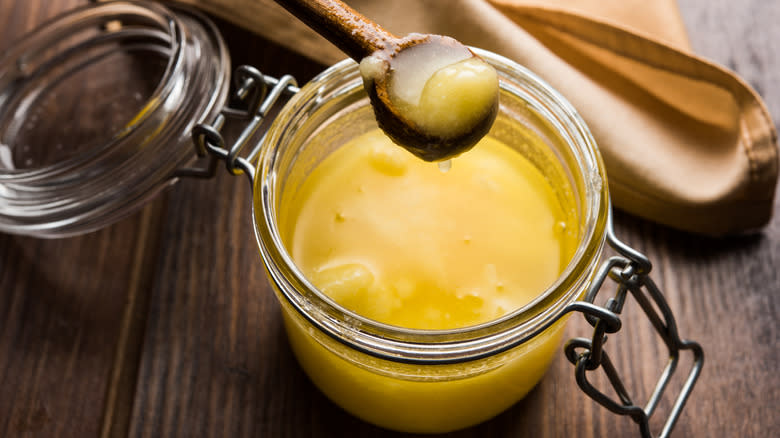
Whilst hot and unpredictable Moroccan summers once necessitated the need to bury butter in the ground as a means of regulating temperature pre-refrigeration, the ability to maintain cool temperatures inside our homes means this is no longer a crucial step in the maintenance of smen, so you won't need to add a shovel to your shopping list when preparing to make yourself a batch of this butter.
After you've finished preparing your smen and have sealed it tightly in a clean glass or ceramic jar, keep it somewhere dark and cool with a temperature, such as a pantry or a cupboard. There's no need to store it in the fridge after clarifying. It will keep for years if left, undisturbed in its container in cool conditions. However, once the smen has been opened, it should be stored in the fridge and consumed within a month.
Read the original article on Tasting Table.

